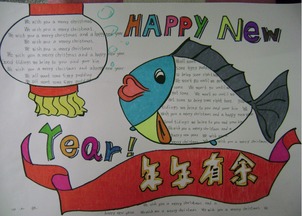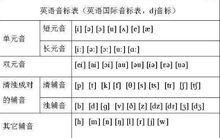Q&A: How to Create a Full-English Spring Festival Handwritten Newspaper
Creating a Spring Festival English Handwritten Newspaper: A Step-by-Step Guide

As the festive air thickens with the aroma of dumplings and the twinkling lights of lanterns illuminate the night, the Spring Festival, also known as Chinese New Year, approaches with its vibrant spirit. This ancient tradition, steeped in rich cultural heritage, offers an ideal opportunity to blend the essence of Chinese culture with the global language of English. Creating a Spring Festival English handwritten newspaper is a delightful way to celebrate this occasion, sharing the joy and significance of the festival with friends and family, regardless of their linguistic background. Here’s a comprehensive guide to help you craft a colorful, informative, and engaging newspaper.

Section 1: Introduction to the Spring Festival
Begin your newspaper with an introductory section that captures the essence of the Spring Festival. Use vibrant colors and festive images to set the tone.
Greeting and Theme: Start with a warm greeting, such as "Happy Spring Festival!" followed by a brief introduction to the theme of your newspaper. You could mention how the festival signifies the turn of the lunar calendar, bringing hope, renewal, and family unity.
Historical Background: Provide a brief overview of the history of the Spring Festival, tracing its origins back to ancient times when it was a time to honor deities and ancestors, and later evolved into a celebration of the new year.
Cultural Significance: Highlight the cultural significance of the festival, emphasizing traditions like family reunions, feasting, fireworks, and dragon and lion dances.
Section 2: Traditional Customs and Practices
Delve deeper into the customs and practices that make the Spring Festival unique, illustrating each point with colorful drawings or photos.
Family Reunion Dinner: Describe the importance of the family reunion dinner, often held on New Year's Eve, where family members gather to share a meal filled with symbolic dishes like fish (representing surplus), dumplings (resembling ancient gold ingots), and rice cakes (symbolizing progress).
Spring Cleaning: Explain the tradition of spring cleaning, which involves thoroughly cleaning the house to sweep away bad luck and make room for incoming blessings.
Red Envelopes (Hongbao): Discuss the significance of giving red envelopes filled with money to children and unmarried adults, as a symbol of good luck and blessings.
Fireworks and Firecrackers: Illustrate the role of fireworks and firecrackers in scaring away evil spirits and welcoming the new year with a bang.
Dragon and Lion Dances: Describe the lively performances of dragon and lion dances, believed to bring good fortune and prosperity to communities.
Section 3: Spring Festival Decorations
Bring your newspaper to life with descriptions and illustrations of the festive decorations that adorn homes and streets during the Spring Festival.
Red Lanterns: Highlight the prominence of red lanterns, which symbolize good luck and joy. Describe how they are hung on doorways, trees, and streets to illuminate the night.
Couplets and Paper Cutouts: Explain the significance of couplets, pairs of poetic lines expressing wishes for the new year, and paper cutouts, intricate designs often featuring animals or flowers, which are displayed on windows and walls.
Spring Festival Flowers: Mention the popular flowers associated with the festival, such as peonies (representing prosperity), peaches (symbolizing longevity), and narcissuses (heralding the coming of spring).
Section 4: Spring Festival Foods
Whet your readers' appetites with a section dedicated to the delicious foods that are an integral part of the Spring Festival celebrations.
Dumplings: Describe the process of making dumplings, from preparing the filling to folding and cooking them. Mention their symbolic meaning and the fun of sharing dumplings with family.
Noodles: Explain the significance of noodles, which represent long life and good fortune, and offer a recipe or two for different types of noodles enjoyed during the festival.
Sweet Rice Balls: Introduce sweet rice balls, a sweet treat often served during the festival, symbolizing unity and completeness.
Nian Gao (Rice Cake): Discuss the traditional rice cake, which signifies progress and a higher income in the coming year.
Section 5: Spring Festival Stories and Myths
Engage your readers with fascinating stories and myths that surround the Spring Festival.
The Story of the Monster Nian: Share the legend of the monster Nian, who was scared away by the color red, fireworks, and loud noises, leading to the traditions of hanging red lanterns and setting off firecrackers.
The Tale of the Peach Wood Tablet: Tell the story of the peach wood tablet, believed to protect homes from evil spirits, and how it evolved into the modern-day practice of displaying couple
- 上一篇: 花丛漫步,为何懒于回首往昔?
- 下一篇: 《东成西就》全演员阵容一览
-
 How to Say 'Quot 无所谓 Quot in English?资讯攻略01-16
How to Say 'Quot 无所谓 Quot in English?资讯攻略01-16 -

-
 How do you say 'let it be' in English?资讯攻略11-04
How do you say 'let it be' in English?资讯攻略11-04 -

-
 汤圆英文单词的音标资讯攻略11-17
汤圆英文单词的音标资讯攻略11-17 -
 如何将“衬衫、短裙、裤子、T恤、毛衣”的英文读法表达出来?资讯攻略11-14
如何将“衬衫、短裙、裤子、T恤、毛衣”的英文读法表达出来?资讯攻略11-14









